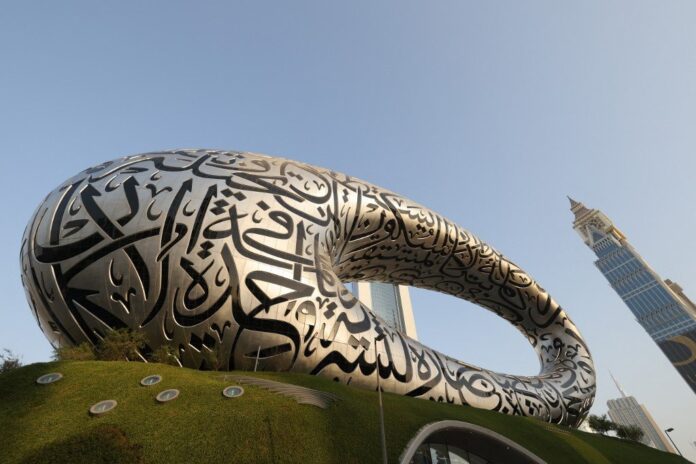The building and construction industry is one of the largest in the world’s economy with approximately $10 trillion spent on construction-related goods and services every year.
But it is also disproportionately destructive as one of the world’s most energy-intensive polluting industries on the planet.
According to figures published on the website USCAD.com in July this year, the world’s construction industry is still responsible for 38 percent of CO2 emissions, 23 percent of air pollution, 40 percent of water pollution, 50 percent of landfill waste, 21 percent of the depletion of natural resources and 40 percent of energy usage.
These are not new figures. It’s not as if the construction industry has suddenly tumbled down a path of self-destruction.
In Las Vegas in 2019, a conference held by the software company Autodesk was told that the construction and manufacturing industries were hugely wasteful and among the world’s biggest polluters.
And in 2021, the general picture for the world’s future was dealt another blow when delegates at COP 26 admitted they were nowhere near to reaching the targets set previously to slow global warming.
“Our theory for how we transform the AEC industry (Architectural Engineering and Construction) is unchanged. We very much want to bring (new) industrial methods and processes to it,” said Andrew Anagnost, CEO of Autodesk on the sidelines of the 2022 Autodesk University conference in New Orleans.
Anagnost said the data and technology was available to help make the industry more environmentally efficient and less wasteful.
There are companies already in existence that provide digital information that can predict potential flaws in plans before they become a reality, and even how much material is needed – and yet Anagnost said there were still companies that were not using the information.
“The biggest waste that you see in the AEC ecosystem, is people making it up along the way.”
In contrast, he said the manufacturing industry generally stuck to its plans so that the end product was what was intended from the outset.
“That kind of precision needs to evolve into the AEC industry. And that’s why you see us building these things that are coming together from both sides. And when that when that work is done, we believe we will have made an impact on how these industries work. Until then, they still redo and undo at a pace that’s, you know, unparalleled in other industries,” he added.
But it’s not all bad news, there are efforts to reduce the amount of waste using cloud-based technology, and it is the Middle East that seems to be embracing this technology.
TURNING BUILDINGS INTO DATA FARMS
The good news is that the Middle East has largely cleaned up its act, according to Naji Atallah, head of construction and manufacturing at Autodesk Middle East.
Speaking to Arab News, he said the reason for the improvement was a factor that had always been present.
He said construction in the region was usually based on undeveloped land, thus removing the need to take into consideration existing structures, that might introduce additional costs.
“There’s no major legacy of buildings and bridges and roads that need to be maintained,” he explained, adding that the construction industry in the region was effectively working on a “blank canvas,” which enabled developers to place sustainability at the forefront of their projects.
“If I look at probably all of the mega projects in the region, sustainability has been one of the big goals that they see.”
“We have seen a shift (in the Gulf region) from we want everything delivered tomorrow, to we want things delivered in a better way.”
Pointing to Saudi Arabia’s Red Sea project and Dubai’s Museum of the future, he said there was now greater effort to ensure a sustainable approach to these projects.
And by using software technology developers have been able to create structures that use less energy and materials in their construction by using information gathered from predictive modeling that shows designers how a structure will behave before it is even built.
The digitization of the building industry – if embraced – could potentially revolutionize the way it works – from lowering waste, reducing pollution and to cutting costs.
“Sensors are so cheap now,” Atallah said, “that they could be placed into every new structure – we don’t even need to know what – or if they-re going to be used – and collect all sorts of information.”
That data, he said, could then be used to predict any structural issues, how to improve fuel economies – to name two – but not just for that structure, but also for future projects.
This data, he said could become a commodity that could be sold to help improve future projects.
BRIDGING THE GAP
Imagine a building – in fact any structure – that from the moment it is complete, starts to collect data that can be used to address problems before they are noticed by the human eye and aid in future new builds.
Sounds futuristic – but the truth is the technology is already here – it’s just a question of people in the industry using it.
The Dubai-headquartered company Dar Al-Handasah, which heralds from Lebanon, and is the 10th leading design firm in the world – third in the Middle East has created a cantilever bridge that was built using recycled plastic – mixed with fiberglass to create a poxy – and a 3D printer.
Using algorithms, the designers were able to come up with a design that created a bridge using minimal materials that, when fixed with the sensors, was able to teach them how to better improve the product in later designs.
The bridge is made up in a modular system from 70 percent recycled materials.
It is a step away from traditional construction methods, with the bridge being built as one piece in a factory environment before being transported to its place of use once complete.
Cloud-based technology provided by Autodesk was used to create virtual modules of the bridge to calculate the best design in terms of material use, look and its structural durability.
Ghassan Zein, the Lebanese digital practice manager at Dar Al-Handasah said the bridge was a first of its kind, he said as such they needed to see how it behaved when put into use was essential for future developments, so it was fitted with sensors.
“We have the monitoring of the intelligence of the bridge that would monitor how it’s doing because it’s new,” Zein told Arab News on the sidelines of the Autodesk University 2022 conference in New Orleans.
The bridge is a new shape, a new design, Zein explained, “So we have to know if it’s doing well.”
The company has a team whose role is to monitor the data gathered from the bridge.
“They analyze the data and keep changing the design of future projects,” he said.
Zein said the structural engineers addressed the design, what was safe, what was not, what performed well, what did not, using live data gathered from sensors in the structure of the bridge.
FROM PREFAB TO MODULAR
The modular approach to building the bridge is not a new concept. In Britain in the 1950s low-cost social housing was created.
These usually low-leveled, single-storied buildings were made up of walls and roofs that were created off-site and then put together once ready.
But they were usually of a low standard with materials that were not long lasting, leaving properties structurally unsound and some of the materials even being harmful to people’s health – including asbestos cladding.
Move forward 70 – 80 years and the concept of building parts, or entire structures such as the 3D printed bridge off-site and then moving them to their final location is now proving to be a leading method of construction – both economically and also environmentally.
Beach villas on the Red Sea project off the coast of Saudi Arabia and Dubai’s Museum of the Future were all built in a factory environment, before they were shipped to their final destination.
The methods being offered at functions such as Autodesk University are an eye opener for the industry.
Invest in the technology and the construction industry could change from being one of the environment’s biggest enemies, to a major green player.
It just needs those in the industry to embrace the future.
The key take away being, collect the data, learn what the potholes are before the building work starts and then embark on the real deal – ultimately the outcome is more efficient.

